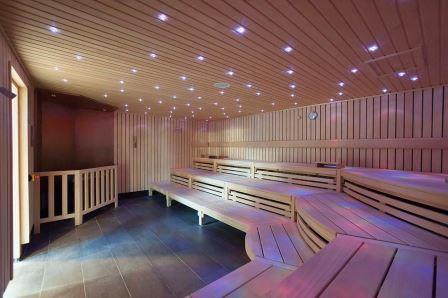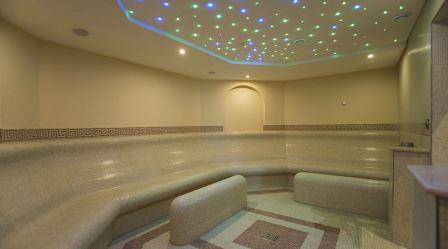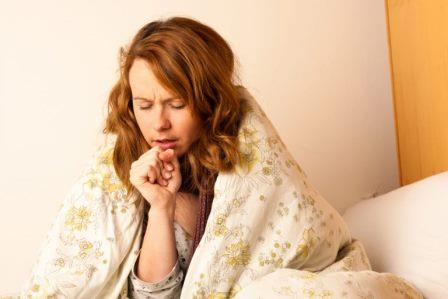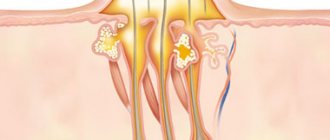How does a bath help with a cough?
The most popular method for the prevention and treatment of many diseases is the Russian bath with a steam room. The Scythians were the first to use baths. At first they washed in them, and then they realized that baths can be used as a healing and hardening agent.
Aroma bath for cough
To treat a certain disease, you need an individual approach to the bath, that is, you can use wet or dry steam, use certain aromatic scents, use hard or soft water, and there are also many types of medicinal brooms for parka.
Brooms
Steaming with a broom is like giving a massage which will increase blood circulation, speed up metabolism, increase sweating and open pores on the skin from which toxins and microbes are washed out. Brooms are made from different plants and therefore they have different properties.
Birch broom cleanses the skin very well during rashes and pustules, has a calming effect, accelerates the healing of abrasions, reduces pain and aches in muscles and joints. It also promotes the expansion of small bronchi, so if you go to the bathhouse with a cough, it promotes the removal of sputum and improves ventilation in the lungs. Oak broom This broom gives the skin elasticity and has a strong anti-inflammatory effect, and the aroma of oak will prevent blood pressure from rising. Linden broom Has antipyretic, wound-healing, soothing and bronchodilator effects; it also accelerates sweating and reduces headaches. Fir broom Vapors of fir resin disinfect the air and irritate the skin, accelerate sweating and blood circulation. Nettle broom Reduces pain in joints, muscles and lower back.
Which sauna to choose for cough treatment?
In practice, there are many recommendations on how to properly cure a cough in a bathhouse. All tips include standard procedures that should not be neglected:
- Before entering, drink a warm decoction or infusion of medicinal herbs;
- We pre-warm up in the washing compartment and go into the steam room for 5 minutes;
- We wash ourselves and relax in the dressing room without contrasting procedures;
- The next visit is longer; an infusion of herbs and essential oils is first poured onto the stones. After 5-10 minutes, a chest massage begins with a broom, previously soaked in boiling water with the addition of herbs;
- You can make 2-3 visits to the steam room, but don’t steam yourself to the point of exhaustion or abuse the time and intensity of the program.
After leaving, be sure to drink hot tea with honey, lemon or ginger. You need to wrap yourself up well to sweat, and don’t forget to change your wet clothes before going to bed. If the wellness program is carried out correctly and all requirements are met, then the next morning there will be no trace of the cough.
Choose a sauna with soft heat up to 70 degrees. Such as:
- Hammam. High humidity, about 100% and temperature 30-50 degrees.
| Hammam. |
- Sanarium. Low humidity around 20% and temperature 45-50 degrees.
|
| Sanarium. |
- Caldarium. High humidity and temperatures around 50 degrees.
|
| Caldarium. |
It is not recommended to visit Russian and Finnish saunas if you have a cough, as their high temperatures create additional stress on the heart.
Flavors
These are tinctures of various herbs that are mixed with water and poured onto hot stones or a hot stove.
Aroma of sage, peppermint and eucalyptus leaf This aroma combined with hot steam destroys a large number of bacteria in the upper respiratory tract. The aroma of poplar buds, tansy flowers and bison leaves. With this aroma you can relieve headaches and weakness. The aroma of birch, oak, linden, thyme and oregano leaves. This aroma will help quickly restore and strengthen your lungs after illness, and will also improve ventilation in the lungs.
Why is a bath recommended for the prevention of colds in children and adults?
|
| A child under 3 years old should not be treated in a bathhouse. |
The bathhouse is definitely beneficial for adults and children, especially if you visit it regularly and wisely.
On the other hand, if children are not accustomed to bath procedures, sending them to the steam room to treat coughs and other manifestations of colds is not the right decision. When is it allowed?
- At the very beginning of the disease.
Using aromatic infusions in the bathhouse, you can conduct an inhalation session for your child. Relevant only in the first 2 days from the onset of the disease. Thanks to this therapy, the bronchi are moistened, which means getting rid of a dry cough, phlegm is removed and the acute stage of the disease can be avoided.
- A week after recovery.
The road to the bathhouse is open when the acute inflammatory period is over (7-10 days after the illness), the child feels well, but has a slight wet cough. After viral infections, mucus accumulates in the lungs, and therefore a short inhalation of warm air with one hundred percent humidity in a bathhouse will help cleanse the respiratory tract.
|
| The steam room will help overcome dry cough. |
| Benefit | Harm |
| Cough prevention A bathhouse is one of the best and most effective ways to get sick less often. In the sauna, a greater number of leukocytes are produced, cellular elements that serve to protect the body from harmful bacteria. By visiting the sauna weekly you will significantly strengthen your immunity. | Fever, more than 37 degrees High temperature is a marker of the body's fight against infection. It is necessary to do less physical activity, lie down more, not go outside and take medications prescribed by your doctor. |
| Getting rid of toxins Under the influence of high temperatures, you actively sweat, and all the dirt comes out with sweat. This is easy to check; after the first trip to the bathhouse, the skin becomes more velvety and the rash goes away. | Heart diseases The bathhouse increases body temperature to an average of 40 degrees, the pulse quickens, the heart works more actively. A steam room in this case can provoke a stroke or heart attack. |
| Relaxation as a way to fight illness Under the influence of a specific microclimate, not only the body, but also the nervous system relaxes. As you know, all illnesses come from the head; less stress means fewer illnesses. | Headache The ear, throat, and nose are closely connected to each other, which means if your cough is accompanied by headaches, it is quite possible that you have swelling of the maxillary sinuses. Self-medication can lead to the development of the disease, including sinusitis. |
Visit the sauna and bathhouse 2 times a week to strengthen your immune system and fight stress that causes illness.
|
| Improve your health with weekly trips to the steam room. |
- Firstly, children who are hardened from an early age get sick less often, and if they do get sick, they suffer the illness in an extremely mild form, without complications.
- Secondly, visiting the steam room with the whole family is a good tradition that teaches the younger generation to a healthy lifestyle.
- Thirdly, bathing procedures, swimming in a pool or dipping into a vat of water are original and useful leisure activities. An important factor is whether the child likes the sauna? If yes, then the healing process will be doubly useful - both for the body and for the mood!
For adults, as a preventive measure for diseases, wiping with snow, dousing with cool water, diving in the font and other contrasting procedures are recommended. If you regularly pamper your body with such simple and accessible hardening, you will feel a noticeable improvement in your well-being, and most importantly, you will get sick much less often.
Contraindications
You should not go to a hot bath if you have a cough with a high fever or high blood pressure. You can go to the bathhouse when you have a cough during the recovery stage, but you cannot go to the bathhouse during the period of exacerbation of the disease. You should not steam if you have heart disease.
In Rus', and in many other countries, from ancient times all ailments were driven out with the help of a bath. It was believed that when steaming, the “spirit of illness” leaves the body. Modern science does not support such an interpretation of treatment, but, nevertheless, believes that our ancient ancestors instinctively correctly understood the principle of the effect of the bath on a sick body.
When heated, the body begins to actively sweat, and toxins come out of it along with the liquid - waste products of harmful microorganisms. Vascular expansion also occurs, blood begins to circulate faster, supplying organs and tissues with oxygen and nutrients, taking with it decay products. The person recovers faster.
In addition, high temperature stimulates the production of lymphocytes, and their increased number copes well with infection. Hot steam and very humid air acts like inhalation - the bronchi expand, phlegm quickly separates, and the sore throat warms up well. So, in general, the bathhouse is excellent for treating colds with coughs and runny nose. But there are a number of exceptions in which visiting a bathhouse can be harmful to health. They must be taken into account.
Supporters' opinion
Those who believe that during a cold, a bath is the first remedy, always give the following arguments:
- A visit to the sauna increases blood circulation, which means that the blood can more quickly cleanse itself of pathogenic bacteria and viruses. This happens because in the steam room, with a gradual increase in steam temperature, body temperature rises and the number of leukocytes increases.
- Plant phytoncides and hot steam help cleanse the nasopharynx of pathological microorganisms. This means that a bath for a cold can alleviate the patient’s condition.
- Inhaling moist steam in a steam room acts like inhalation, cleansing the lungs and bronchi.
- Increased humidity and hot steam help soothe cough.
- A bath broom is at the same time a powerful dose of phytoncides, the best massager for hot skin and an excellent way to relieve aching joints during illness.
And if you consider that after a steam room in a bathhouse it is customary to drink fragrant herbal tea, then we can say that the body receives a full range of therapeutic and supporting procedures in order to quickly renew itself and overcome a cold.
Visiting the sauna when coughing
The bath can be compared to hot inhalation
Those who are accustomed to this useful procedure are wondering whether it is possible to go to the bathhouse when coughing. This can and should be done subject to existing restrictions. In a bathhouse, especially a Russian one, steam can be saturated with vapors of medicinal plants or beneficial essential oils.
This will act as a complex inhalation and aromatherapy, helping the body “boost” its own immunity. But at the same time, it is necessary to take into account the risk of an allergic reaction to the plant materials used.
High air temperature perfectly expands the bronchi and blood vessels. In this case, you can quickly and easily get rid of phlegm, even if it is thick and sticky. The dry, suffocating cough also goes away. The wet steam from the heater perfectly softens a dry and irritated throat, softens the mucous membranes, provokes the production of more liquid mucus, which is coughed up and frees the bronchi and lungs of the patient. It quickly becomes easier for him to breathe.
Everyone probably knows about the role of warming the body during a cold. Our mothers always advised us to steam our feet and take a hot bath when we got cold or got into water.
The sauna acts even faster and more efficiently - it has a complex effect on the entire body.
But this is precisely where its potential harm lies. Not all people can use a bathhouse to treat colds and coughs. Some diseases, especially those related to problems of the heart and blood vessels, are incompatible with the adoption of thermal procedures. This must be taken into account without fail.
Benefits of bath procedures
Bath procedures relieve coughs and improve expectoration
Bath treatment is simple and effective, but it is advisable to use it only at the very beginning of the disease and at the end of it, when it is necessary to eliminate congestion and residual cough that does not want to end.
Only in these cases will a visit to the steam room benefit your health. Doctors also unanimously support such rules and when asked whether it is possible to go to the bathhouse if you have a cough, they always stipulate prohibitions on visiting it.
In general, the advantages of the bath are that the body has a complex, diverse effect:
Effect of high temperature. The body effectively warms up, the bronchi and blood vessels dilate, the healing process is accelerated by improving blood supply, clearing the bronchi and lungs of sputum and accumulations of pathogenic microorganisms. The body sweats a lot, and with sweat comes out toxins and breakdown products of harmful bacteria and viruses. The influence of hot steam. Under its action, the mucous membranes soften, irritation and dryness in the throat are relieved, coughing is reduced, sputum becomes more liquid and is easily expectorated. The influence of decoctions of medicinal herbs and essential oils used in the bath. These products enhance the effect of hot steam and temperature. Mechanical impact. Beating with a broom is akin to a massage; it effectively enhances processes in the lungs and surrounding tissues, which helps eliminate inflammation and speeds up recovery.
Therapeutic procedures in the bath
Bath procedures should be combined with drinking herbal teas for coughs
Having found out whether it is possible to go to the bathhouse when you cough, you need to understand what exactly needs to be done to treat the cough:
Let your body get used to the high temperature without immediately entering the steam room. Do not use a cold pool, shower, or even rubbing with snow. Hardening procedures should be reserved for a healthy body; for a patient they are extremely dangerous. Drink more healthy drinks when warm. Teas and herbal decoctions with honey, Borjomi with milk, tea with raspberries or lemon, and other vitamin drinks work well. Alcohol is strictly prohibited! Perform a back massage. It is not necessary to use brooms, but actively “tapping” the heated lungs with steam is very useful for effective cleaning. It is good to use herbs such as eucalyptus, linden blossom, mint and chamomile to create steam. There is no need to leave the bathhouse immediately after the procedure. The body must be allowed to “cool down” and the body must adapt to changing temperatures, otherwise the patient’s condition may not improve, but worsen. After the bath you need to rest. This will help the body more effectively restore strength and cope with the cause of the cough.
Doctors' recommendations
Why is this useful?
When we turn to a doctor for advice: “Is it possible to go to the bathhouse if you have a cough?”, we most often receive complete approval.
And this is quite logical, because the bathhouse is one of the most effective means of tidying up the lungs and upper respiratory tract:
A mild cough caused by bronchitis, the steam room treats with a bang
- Hot air, saturated with moisture, has a beneficial effect on the condition of the mucous membranes. Penetrating into the bronchi and alveoli, it stimulates the separation of sputum and its removal from the body.
- Also, high air temperature promotes intense blood circulation, which means that a large number of leukocytes, which are responsible for the formation of immunity, enter the blood. So after a bath, the body itself begins to fight microbes much more successfully.
- Another healing factor is essential oils and other beneficial substances contained in water vapor. They get there either from the heater of the bathhouse, onto which we throw water, or from the leaves of a steamed broom. Being antiseptics, these biologically active substances actively inhibit the development of pathogenic microflora on the mucous membranes, from the nasopharynx to the lungs themselves.
- Finally, don’t forget about massage with brooms. Intensive chest treatment increases the likelihood of a quick recovery and elimination of the symptoms of bronchitis, which most often causes coughing.
Possible contraindications
However, in some situations you should not visit the steam room of a bathhouse if you have a cough.
And although such situations are few, they are still worth keeping in mind:
- Firstly, a bath is contraindicated if colds are accompanied by an increase in temperature. When the thermometer reaches 37.2 0, you should refuse to visit the steam room, otherwise the inflammatory process will only intensify.
Do not steam at high temperatures!
- Also, you should not subject your body to stress if the cough is just a symptom of a serious illness (whooping cough, tuberculosis, etc.). In this situation, there is only one instruction: first we treat, then we take a steam bath.
- You should be very careful when coughing children visit the bathhouse. Since the cost of a mistake here is very high (a child’s immunity is much weaker than that of an adult), it is not worth the risk without prior consultation with a pediatrician.
In any case, you need to use a steam room for treatment with caution, because the principle of “do no harm” has not been canceled!
Ban on bathhouse
If your body temperature is elevated, it is prohibited to go to the bathhouse!
If you want to start treatment with bath procedures, you need to take into account the following prohibitions and restrictions:
You should not take children under 3 years of age to the bathhouse. You can treat a cough with a bath only at the very beginning of the disease or at its end. You cannot go to the steam room with a temperature above subfebrile (37 C), during an acute course of the disease, when it has been going on for more than one day and is accompanied by characteristic symptoms - cough, runny nose, hyperthermia, severe weakness, headache. If you have characteristic herpetic rashes, especially on the face and lips, which we used to call a cold, a bath is contraindicated, since the virus can “spread” to other parts of the body. It is forbidden to visit the bathhouse for the purpose of treatment in groups. In a cramped room, the risk of “giving” your disease to loved ones increases tenfold.
You can learn more about the benefits and harms of bath procedures from the video:
After the steam room, the patient’s body is literally covered with sweat, which contains a huge amount of pathogens and their toxins. All this must be washed off thoroughly, then recovery will come faster. So the opinion that a patient should not wash is fundamentally wrong. Hygiene is very important, the main thing is not to get too cold and not get into a draft.
Bath treatment is useful and effective, provided that simple rules are followed.
Noticed a mistake? Select it and press Ctrl+Enter to let us know.
Opponents' opinion
Doctors who are not sure that it is possible to take a steam bath for a cold also give quite reasonable arguments in defense of their opinion:
- A cold is accompanied by general malaise and fever. For some, the temperature rises slightly, but in the steam room it will gradually increase by at least 2 °C. The patient may not even notice an increase to 37 °C, but an increase to 39 °C can lead to resuscitation.
- 2-3 days after the onset of a cold, a dominance of bacteria and viruses is observed in the body. Moist, warm air can speed up their reproduction.
- A bath for a cold is contraindicated for those whose illness is accompanied by a headache. Heat and overheating will aggravate the situation and may cause fainting.
- A cold itself increases the load on the heart, and a bath makes this load prohibitive. A harmless steam bath can result in a heart attack.
- Many colds are accompanied by herpes on the lips or body. Overheating of the body in this case will complicate the course of herpes and may cause the spread of this disease.
All these arguments are quite reasonable. Therefore, when answering the question: “Is a bath for a cold good or bad?”, you need to proceed from your condition. At the initial stage of the disease, with the first minor manifestations, a bath will help, but in the acute stage it will most likely harm.















